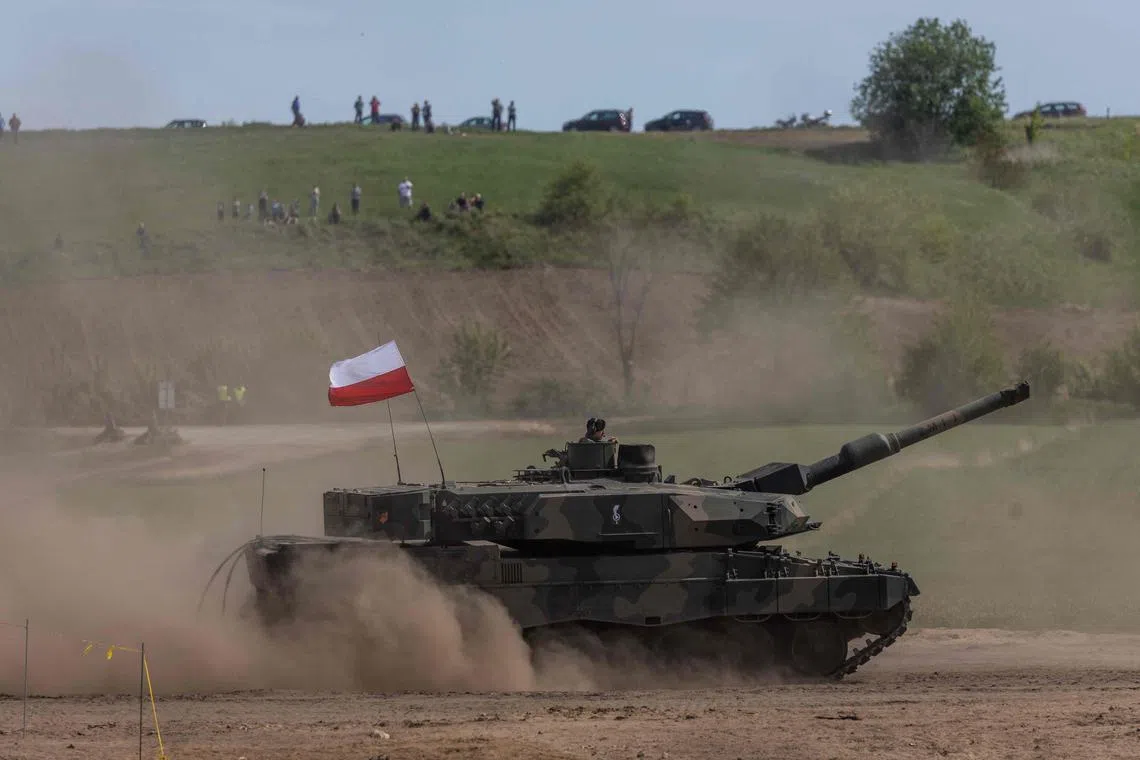As Poland and Britain weigh sending tanks to Kyiv, pressure on other allies mounts
Sign up now: Get ST's newsletters delivered to your inbox

Poland would require a sign-off from Berlin to send its German-made tanks.
PHOTO: AFP
Follow topic:
LONDON - Poland and Britain are considering sending main battle tanks to Ukraine, a move that would end the West’s nearly year-long refusal to deploy some of its most advanced weaponry against Russia and ratchet up pressure on other allies of Kyiv to follow suit.
Warsaw and London have yet to finalise such a move, but doing so would meet a demand Kyiv has been making almost since the start of the war and support potential offensives against Russian forces in the coming months.
Poland would require a sign-off from Berlin to send its German-made tanks.
Defence officials in the United States and Europe have long held concerns that giving Ukraine tanks would signal more direct Western involvement in the war and could prompt Russian President Vladimir Putin into escalation.
On Wednesday, President Andrzej Duda of Poland said his country was prepared to send German-made Leopard II tanks to Ukraine
No such Western-made battle tanks have been sent to Ukraine since the invasion.
Poland had already decided to include the Leopards as part of a package from the coalition, President Duda said, speaking at a joint news conference in Lviv with Ukrainian President Volodymyr Zelensky and President Gitanas Nausėda of Lithuania.
Mr Duda added that he hoped the tanks would “soon flow through various routes to Ukraine”.
But Polish officials have urged Western nations several times this week to band together and jointly send more modern tanks to bolster Ukraine’s diminishing supply of Soviet-era tanks.
But Germany has long resisted sending Ukraine offensive weaponry out of concerns about escalating the war and said it would not be the first Nato ally to send tanks. And, out of ethical concerns, Germany also places limits on its vast, lucrative arms exports and their re-export, so its agreement is required for Poland or any other country to send Ukraine the German-made Leopards.
Mr Zelensky said on Wednesday that Ukraine expected a “joint decision” on the transfer of the tanks and that it would take donations from several countries to meet the needs of Ukrainian forces.
“One state cannot help us with Leopards because we are fighting against thousands of tanks of the Russian Federation,” he said.
The mounting pressure on Berlin comes a day after Britain said it was considering sending Challenger II tanks.
No decision has yet been made on whether the Challenger II tanks – reportedly as few as 10 – will be donated to Ukraine.
Ukraine’s Foreign Minister, Mr Dmytro Kuleba, expressed hope that the floodgates had been opened for the West to send battle tanks after France, the United States and Germany agreed in quick succession last week to send lighter armoured fighting vehicles to Ukraine. Still, the armoured vehicles fall short of the capabilities of battle tanks like the Leopards, which analysts say could be key for Ukraine to push beyond the grinding attrition that has defined the war this winter. NYTIMES– AMX-10 RC reconnaissance vehicles from France, M2 Bradley Fighting Vehicles from the US, and Marder Infantry Fighting Vehicles from Germany.
Germany’s decision to send the Marders

